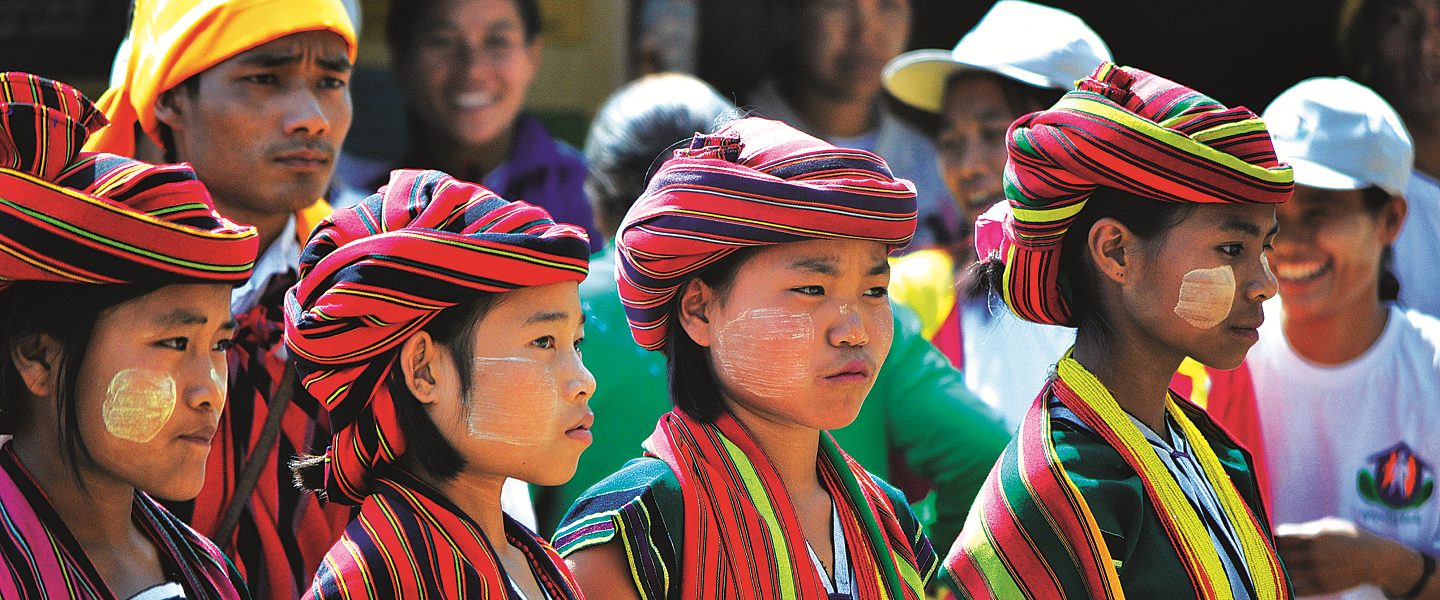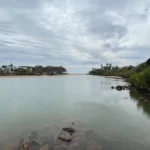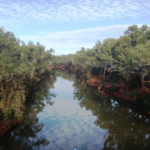Indigenous Peoples are culturally distinct societies and communities. Although they make up approximately 6% of the global population, they account for about 19% of the extreme poor.
Context
Indigenous Peoples are distinct social and cultural groups that share collective ancestral ties to the lands and natural resources where they live, occupy or from which they have been displaced. The land and natural resources on which they depend are inextricably linked to their identities, cultures, livelihoods, as well as their physical and spiritual well-being. They often subscribe to their customary leaders and organizations for representation that are distinct or separate from those of the mainstream society or culture. Many Indigenous Peoples still maintain a language distinct from the official language or languages of the country or region in which they reside; however, many have also lost their languages or on the precipice of extinction due to eviction from their lands and/or relocation to other territories, and in. They speak more than 4,000 of the world´s 7,000 languages though some estimates indicate that more than half of the world’s languages are at risk of becoming extinct by 2100.
There are an estimated 476 million Indigenous Peoples worldwide. Although they make up just 6 percent of the global population, they account for about 19 percent of the extreme poor. Indigenous Peoples’ life expectancy is up to 20 years lower than the life expectancy of non-Indigenous Peoples worldwide. Indigenous Peoples often lack formal recognition over their lands, territories and natural resources, are often last to receive public investments in basic services and infrastructure and face multiple barriers to participate fully in the formal economy, enjoy access to justice, and participate in political processes and decision making. This legacy of inequality and exclusion has made Indigenous Peoples more vulnerable to the impacts of climate change and natural hazards, including to disease outbreaks such as COVID-19.
While Indigenous Peoples own, occupy, or use a quarter of the world’s surface area. Indigenous Peoples conserve 80 percent of the world´s remaining biodiversity and recent studies reveal that forestlands under collective IP and local community stewardship hold at least one quarter of all tropical and subtropical forest above-ground carbon They hold vital ancestral knowledge and expertise on how to adapt, mitigate, and reduce climate and disaster risks.
Much of the land occupied by Indigenous Peoples is under customary ownership, yet many governments recognize only a fraction of this land as formally or legally belonging to Indigenous Peoples. Even when Indigenous territories and lands are recognized, protection of boundaries or use and exploitation of natural resources are often inadequate. Insecure land tenure is a driver of conflict, environmental degradation, and weak economic and social development. This threatens cultural survival and vital knowledge systems – loss in these areas increasing risks of fragility, biodiversity loss, and degraded One Health (or ecological and animal health) systems which threaten the ecosystem services upon which we all depend.
Improving security of land tenure, strengthening governance, promoting public investments in quality and culturally appropriate service provision, and supporting Indigenous systems for resilience and livelihoods are critical to reducing the multidimensional aspects of poverty while contributing to sustainable development and the Sustainable Development Goals (SDGs). The World Bank works with Indigenous Peoples and governments to ensure that broader development programs reflect the voices and aspirations of Indigenous Peoples.
Over the last 30 years, Indigenous Peoples’ rights have been increasingly recognized through the adoption of international instruments such as the United Nations Declaration on the Rights of Indigenous Peoples (UNDRIP) in 2007, the American Declaration on the Rights of Indigenous Peoples in 2016, the Regional Agreement on Access to Information, Public Participation and Justice in Environmental matters in Latin America and the Caribbean (Escazú Agreement) in 2021 and the Indigenous and Tribal Peoples Convention from 1991. At the same time, global institutional mechanisms have been created to promote Indigenous peoples’ rights such as the United Nations Permanent Forum on Indigenous Issues (UNPFII), the Expert Mechanism on the Rights of Indigenous Peoples (EMRIP), and the UN Special Rapporteur on the Rights of Indigenous Peoples (UNSR).
Strategy
The World Bank has established a network of Regional Indigenous Peoples Focal Points who work together with a Global Coordinator for Indigenous Peoples. This network of professionals works to enhance the visibility and inclusion of Indigenous Peoples in the Bank’s analytical work, Systematic Country Diagnostics (SCDs), Country Partnership Frameworks, national policy dialogues, and public investment lending and trust funds.
The Environmental and Social Framework (ESF), the World Bank’s framework that supports borrowers to better manage project risks as well as improve environmental and social performance, contains a standard on Indigenous Peoples/Sub-Saharan African Historically Underserved Traditional Local Communities (ESS7). This standard contributes to poverty reduction and sustainable development by ensuring that projects supported by the Bank enhance opportunities for Indigenous Peoples to participate in, and benefit from, the investments financed by the Bank in ways that respect their collective rights, promote their aspirations, and do not threaten or impact their unique cultural identities and ways of life. Currently, ESS7 is being applied in approximately 33 percent of the Bank’s investment lending.
The World Bank is engaging with Indigenous Peoples’ organizations to better understand and build upon traditional knowledge for climate change mitigation and adaptation solutions. Through direct grants to indigenous organizations and inclusion in national programs, the Bank is also working to promote the recognition and strengthening of Indigenous Peoples’ significant contributions as stewards of the world’s forests and biodiversity.
This is particularly relevant to the Reducing Emissions from Deforestation and Forest Degradation plus (REDD+) agenda, where – given their close relationships with and dependence on forested lands and resources – Indigenous Peoples are key stakeholders. Specific initiatives in this sphere include: a Dedicated Grant Mechanism (DGM) for Indigenous Peoples and Local Communities under the Forest Investment Program (FIP) in multiple countries; a capacity building program oriented partly toward Forest-Dependent Indigenous Peoples by the Forest Carbon Partnership Facility (FCPF); support for enhanced participation of Indigenous Peoples in benefit sharing of carbon emission reduction programs through the Enhancing Access to Benefits while Lowering Emissions – EnABLE Fund; and analytical, strategic planning, and operational activities in the context of the FCPF and the BioCarbon Fund Initiative for Sustainable Forest Landscapes (ISFL). Indigenous Peoples are also observers to the Climate Investment Funds (CIF).
Result
Increased engagement and dialogue and awareness of Indigenous Peoples’ rights have yielded results at the global, regional, country, and community levels. Examples include:
World Bank direct dialogues with Indigenous Peoples
- At a global level, the Bank holds an ongoing dialogue with the Inclusive Forum for Indigenous Peoples (IFIP), comprised of Indigenous Peoples representatives from Africa, East Asia and the Pacific, Europe and Central Asia, Latin America and the Caribbean, and South Asia. This dialogue provides an opportunity for the Bank to deepen understanding on issues critical for Indigenous Peoples across the globe and inform Bank strategies. It also serves to inform Indigenous leaders about Bank strategies and work and allows for learning across regions. Finally, it serves to facilitate dialogue for Indigenous organizations with the Bank’s regional and country teams.
- At a regional level, the World Bank’s Latin American and Caribbean team maintains an ongoing dialogue and strategic work with the Abya Yala Indigenous Forum (FIAY) and the Indigenous Fund for Latin American and the Caribbean (FILAC). The objective of this dialogue is to enhance mutual understanding between the Bank and Indigenous organizations, facilitate the more effective application of ESS7, and build Indigenous Peoples inclusion and voice in the policy dialogue and investments financed by the Bank in the Region.
- At national levels, in Nepal, the Bank has launched an Indigenous Peoples and Local Communities Consultative Forum. This Forum serves as a round-table for knowledge exchange and dialogue to enhance the Bank’s engagement with Indigenous peoples and/or local communities across the portfolio in Nepal, with a particular focus on forestry. The first Forum meeting was held on March 14th, 2022 and will continue on a quarterly basis.
- In Kenya, the Bank is supporting the National Gender and Equality Commission (NGEC) to develop an Inclusive Development Framework for Marginalized Communities.Advancing knowledge and analytics relevant for Indigenous Peoples
- In the Philippines, the Bank has been implementing an Indigenous Peoples engagement strategy focusing on four pillars: a) Dialogue with IP communities and other ethnic minorities, NGOs and CSOs working on IP issues; b) Partnerships with government agencies and donors to promote IP inclusion; c) Data and Analytics to build robust evidence demonstrating the developing challenges affecting indigenous populations; and d) Policy and Operations to mainstream IP issues within Bank operations and also propose IP-specific IPF projects directly benefiting and promoting indigenous communities. In this regard, three core activities are underway: An Indigenous Peoples report titled “No Data No Story: Indigenous Peoples in the Philippines Report; An Indigenous Peoples and Ancestral Domains Data and Information Platform and Portal; An Indigenous Peoples-specific household survey to provide data that will inform the Bank’s and government’s policy and operations.
- In an effort to contribute to global public knowledge, the Bank has been advancing two initiatives to promote knowledge and good practice in priority areas for Indigenous peoples. These include: (i) a Good Practice Note of Commercial Development in Indigenous Peoples Lands & Territories, and (ii) a Technical Note on the Key Drivers for Indigenous Peoples Resilience, that is being prepared with Indigenous leaders and organizations. In addition to informing Bank finance and policy dialogue on how to best support IP resilience, the Note also aims to contribute to building more resilient societies by promoting a deeper understanding of the benefits of Indigenous peoples’ practices of collectivity, solidarity, and sustainable co-existence with the natural environment.Indigenous Peoples in World Bank Systematic Country Diagnostics (SCDs) and Country Partnership Frameworks (CPFs)
- Building on the engagement and analytics of the World Bank in countries across the world, Indigenous Peoples are gaining increased visibility in upstream country planning documents. Illustrative examples can be found in the SCDs and CPFs of Cameroon, Central African Republic, Congo, Guatemala, Lao PDR, Myanmar, Panama, Papua New Guinea, the Philippines, Solomon Islands, and Vietnam.Investing in Indigenous Peoples’ priorities
- In Kenya, the Financing Locally Led Climate Action (FLLoCA) program is supporting partnerships between governments and communities to assess climate risks and identify socially inclusive solutions that are tailored to local needs and priorities. Indigenous peoples or traditionally marginalized groups represent a significant proportion of beneficiaries.
- In 2020 the World Bank approved Development Policy Operations (DPOs) in Guatemala and Panama that included policy reforms in areas prioritized by Indigenous Peoples. These include: the approval of the Action Plan to Implement the National Midwives Policy in Guatemala and the approval a legal framework that legally adopts the National Indigenous Peoples Development Plan of Panama, requiring a national budgetary allocation for its implementation each year. Both of these policy actions have been subsequently approved by the national authorities in these countries.
- In Ecuador, the Bank approved a loan for $40 million to support territorial development priorities for Indigenous, Afro-Ecuadorian, and Montubian peoples and nationalities in the areas of economic development, governance, and COVID-19 response. This project was designed and will be implemented by the Government of Ecuador in partnership with Indigenous, Afro-Ecuadorian and Montubian organizations at both national and territorial levels.
- In Panama, in 2018, the Bank approved the first loan in more than 20 years for $80 million to support what Indigenous Peoples have put forward as their vision for development through the National Indigenous Peoples Development Plan. Jointly developed by Indigenous Peoples, the government and World Bank, this project aims to strengthen governance and coordination for Indigenous Peoples to partner as drivers in their own development, while supporting improvements in access, quality, and cultural pertinence of basic service delivery, in accordance with the Indigenous Peoples’ vision and development priorities.
- In Laos, the Poverty Reduction Fund Project (PRF) III was established as one of the Government of Lao PDR’s main vehicles to decrease rural poverty and deliver infrastructure services in rural areas. Under the two preceding World Bank-supported projects, the PRF has improved access to infrastructure for well over a million-rural people through implementing more than 4,700 subprojects. The PRF II (2011-2016) alone improved access to infrastructure for more than 567,000 rural people, financing 1,400 subprojects prioritized by beneficiary communities . Ethnic minorities account for approximately 70% of project beneficiaries.
- In Cambodia, the Voice and Action: Social Accountability for Improved Service Delivery project facilitated and supported the social inclusion of ethnic minorities, women, and other vulnerable and marginalized communities in effective access to service delivery. Ethnic minorities were hired by local government as community accountability facilitators and improved the quality of service provision in six different Indigenous languages (Khmer-Lao, Kreung, Kuoy, Proav, Mill, and Kraol) through mobile loudspeaker and radio broadcasts.
- Approximately 33 percent of the Bank’s investment portfolio applies ESS7, and in so doing, is ensuring that governments work in consultation withIndigenous Peoples to promote their inclusion in project benefits and mitigation of adverse impacts.Direct grants to Indigenous Peoples through Climate, Forestry and other Trusts Funds
- Climate change is a priority area where the World Bank works closely with Indigenous Peoples and seeks to deepen and expand engagement. The World Bank has supported three different direct grant mechanisms for Indigenous peoples, which have gradually contributed to capacity building and participation of Indigenous Peoples in climate policy dialogue, forest management, and participation in the benefits of emissions reductions.



